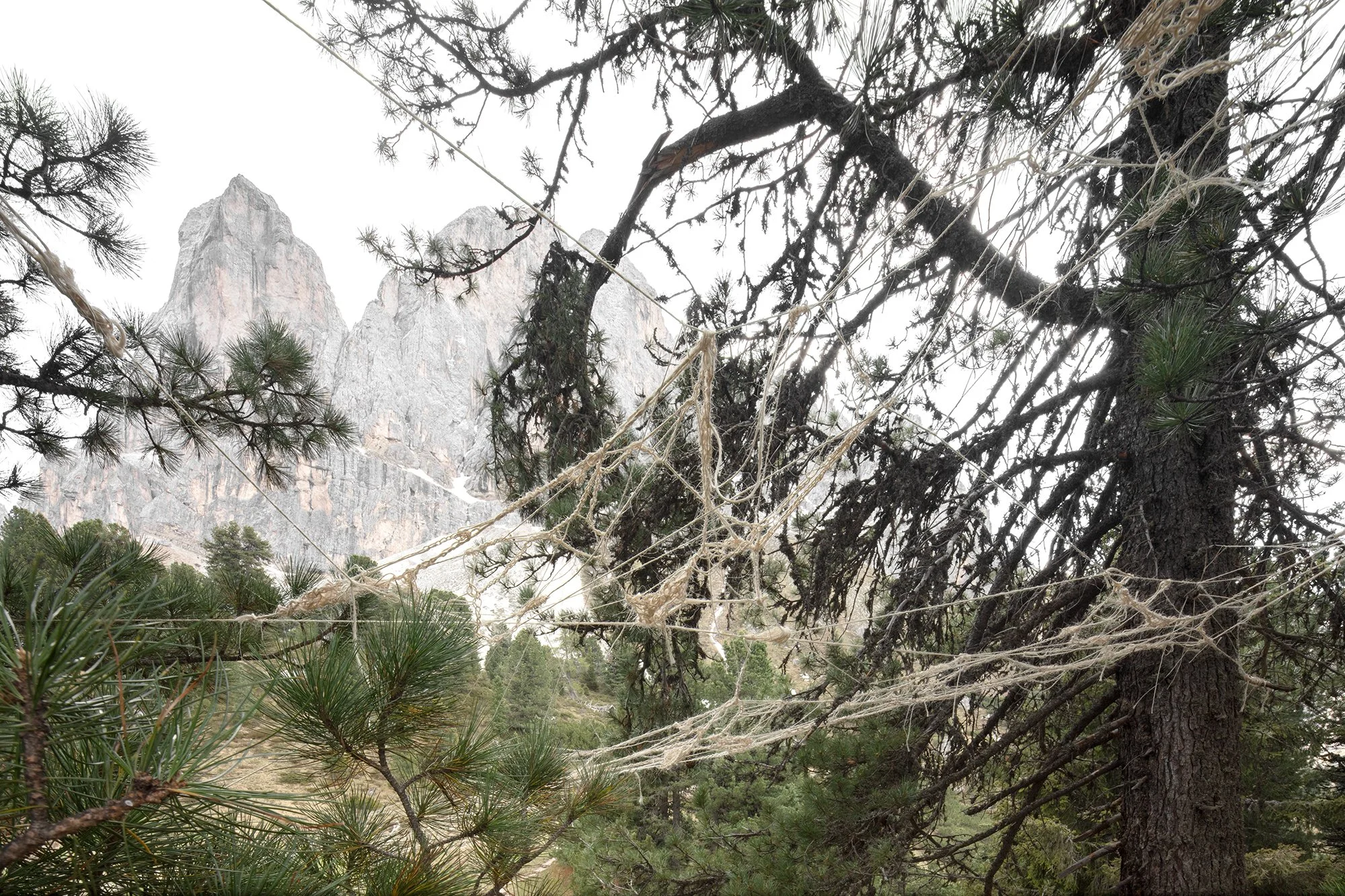Nexus
Delilah Friedman
The work centres around the underground links between plants, mushrooms, bacteria, insects as well as the relationship between humanity and nature and synapses. A nexus. The artist knotted and crocheted, a widespread technique in Badia, over three kilometres of sisal thread, a natural fibre. This tangle of threads and knots wrap around the tree trunks, connecting them in a spider’s web, possibly a depiction of what Suzanne Simard dubbed Wood Wide Web in her 1989 [BTB1] research. The work and nature enter a dialogue straddling the border between natural and artificial, striking a sensible and sustainable balance. Nexus is also reminiscent of the human brain, whose dendrites and synapse create an infinite network of possible pathways.



Exhibit place Pra de Pütia
To reach the location, you’ll have walked by the scenic outlook boasting a stunning view over the Putia and “Roa dl Maier”, the large landslide which shaped the Moibach gorge. On the gorge’s steep walls, you can see sedimentation layers stemming from over 200 million years ago – the foundations of the Dolomites. Our planet and humanity’s history are an infinite succession of overlaps and points of contact.











